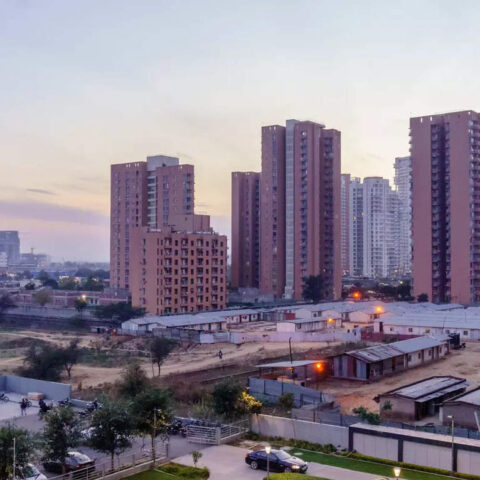The Canadian office market seems to be turning a corner toward greater stability, according to Colliers Canada‘s Q3 2024 National Market Snapshot.
The report shows a rise in suburban office activity, while the industrial sector is in a cooling trend.
“While vacancy continues to rise (in the office market), the increase is more moderate than in the past few years, with a declining share of available sublet space,” the report noted. “Rapidly declining office construction seems likely to bring more balance to the market in 2025.”
In terms of industrial space, the report said: “After years of steady increases, the national industrial average asking net rental rate decreased quarter-over-quarter. While more than half of our tracked regions did increase from Q2, major markets like Vancouver, Toronto and Montreal continue to see contraction in this regard. Victoria is now recording the highest asking net rental rate figure, just shy of $21 per square foot.”
Commenting on the report findings, Adam Jacobs, Head of Research for Colliers Canada, said the worst seems to be over for certain segments of the commercial real estate market. “It’s been such a wild couple of years,” he said, referring to the pandemic and rising interest rates which followed. “It’s starting to seem like that whole crazy, yo-yo-ing cycle is kind of coming to an end.”
Jacobs said he expects the Bank of Canada will continue to cut interest rates in the near future, and while vacancies are still rising and office remains a “tenants’ market”, there are unlikely to be the vacancy rate spikes seen in the past four years.
“I think there is some point where that levels off, probably in the next year,” he said. “And we’re seeing a lot of other assets tailing off too — even mighty industrial. Construction levels are going down.”
Suburban markets ‘tighter’ than downtown
Sublet office space is dropping in several markets while development has also dropped off, Jacobs noted. Meanwhile, Canada’s growing population and return to office policies could spur an increase in demand. “We’re in a kind of a weird situation now where the suburbs are a tighter market than downtown and that’s the case almost everywhere,” he said. “When we look back historically… downtown is usually more in demand.”
Here is the report’s key findings for some of the major markets in Canada:
Toronto
Since the first half of 2024, Toronto’s office buildout costs have declined just ahead of inflation trends. Year-over-year growth rates hovered around four to five per cent, comparable to growth patterns observed in 2018. In the medium term, owners and tenants can expect these costs to fluctuate with the inflation rate.
Model suites have been successful in attracting tenants seeking to reduce upfront costs by securing a more efficient office footprint. Suites surpassing 20,000 square feet and entire floorplates, have a comparatively shorter lease-up period when compared to smaller spaces ranging from 10,000 to 20,000 square feet, as well as more private, compact offices.
Although the Toronto industrial market’s availability rose to four per cent in Q3, the vacancy rate did not increase, as the majority of space that came to the market was represented by sublease listings rather than direct lease listings. Despite the increase in availability and asking net rental rates which declined again quarter-over-quarter, absorption turned positive in Q3 after it was negative the previous quarter.
While square footage under construction has hovered around 15 million square feet for the last few quarters, a mere 1.6 million square feet of new supply was delivered in Q3. However, there has been a slight shift to more design builds as opposed to speculative development.
Vancouver
The Greater Vancouver Area office market saw its first quarter of negative absorption in the year and the vacancy rate rose to 9.4 per cent. This was buoyed by the fastest quarterly rate of increase in the last year with eight per cent growth in the headlease space.
Unfinished, speculative office space has been slow to lease, with most new buildings having no pre-leasing completed at the time of delivery. However, Main Alley – M4 was a notable exception with 84 per cent of its footprint pre-leased in place, including the major tenant Animal Logic (acquired by Netflix) taking over 110,000 square feet, which they are currently having custom finished.
The Vancouver industrial market experienced a quiet summer for deal activity. Although the vacancy rate remained flat quarter-over-quarter, both availability and vacancy increased slightly in terms of the square footage. A higher share of this reflected sublease options replacing headlease options.
Several bulk or large headleases in the 75,000 to 125,000 square foot range were completed early in the quarter, while some bulk or large listings rolling over from Q2 to Q3 became vacant.
Q3 2024 saw the lowest quarterly new supply delivery in over two years, with just under 480,000 square feet of new industrial space entering the market.
Construction activity has slowed down or has even been suspended in some cases this year as landlords still find it hard to secure financing or complete sufficient preleasing to justify projects.
Montreal
In Q3, the Greater Montreal’s office market introduced 130,000 square feet of new space in the midtown market. Devmont has successfully delivered the Tour Westbury, which encompasses 60,000 square feet of office space, while TGTA Real Estate has completed an office building in Esplanade Cartier, totaling 70,000 square feet.
Metrocap and Prime Properties have acquired six properties in Montreal’s Old Port area.
410 Saint- Nicolas is likely to be transformed into a vertical shopping centre, with the upper floors remaining as office space. The buyers are also considering converting 343 Saint-Nicolas back into a hotel, one of its former uses.
Additionally, both partners will be relocating their offices from 6252 Somerled Ave. to 360 Notre Dame Ouest. Plans for the remaining three properties have not yet been announced and they are set to acquire two more properties in October.
While Montreal’s industrial market did post negative absorption for another quarter, the region is showing signs of stability. For one, the vacancy rate increased by only 40 basis points quarter-over-quarter, compared to 60 basis points each of the last few quarters. As well, asking net rental rates decreased by only $0.14 quarter-over-quarter compared to an average of $0.40 each of the last three quarters.
Moreover, markets like East Island, Midtown and Saint-Laurent have experienced rental rate growth from last quarter, while the North Shore has experienced growth year-over-year.
Calgary
In Q3, Calgary’s suburban office market reported positive net absorption yet again, primarily driven by small to mid-sized transactions.
This year’s suburban absorption has been driven by the South East market, which has posted 182,170 square feet year-to-date, the highest of any submarket—a trend that continued through Q3. The Beltline continues to see steady activity, with its first quarter of positive absorption this year.
Downtown Calgary saw a period of consistency in Q3, despite reporting approximately 383,000 square feet of negative net absorption. Nevertheless, the City of Calgary’s resumption of the Downtown Development Incentive Program signals a promising outlook for the office market.
An additional $52.5 million from the Federal Housing Accelerator Fund will allow eligible developers to receive up to $75 per square foot for office-to-residential conversion projects.
Calgary’s industrial market experienced continued growth and demand throughout Q3. With over two million square feet of buildings completing development this quarter, the pipeline of under construction buildings in the region shrank to its lowest point since Q2 2021. This influx of new space caused the vacancy rate to increase to 3.9 per cent.
Average asking net rental rates continue their steady incline in 2024. Q3’s rate sits at $12.55 per square foot, representing a 2.1 per cent increase quarter-over-quarter, one of the larger increases in the country.
Outlook for the rest of 2024 and the beginning of 2025 will remain largely the same as it has been over the past year, with steady leasing and sales activity across a variety of size ranges and submarkets.
Editor’s note: This article has been updated and edited for clarity.







